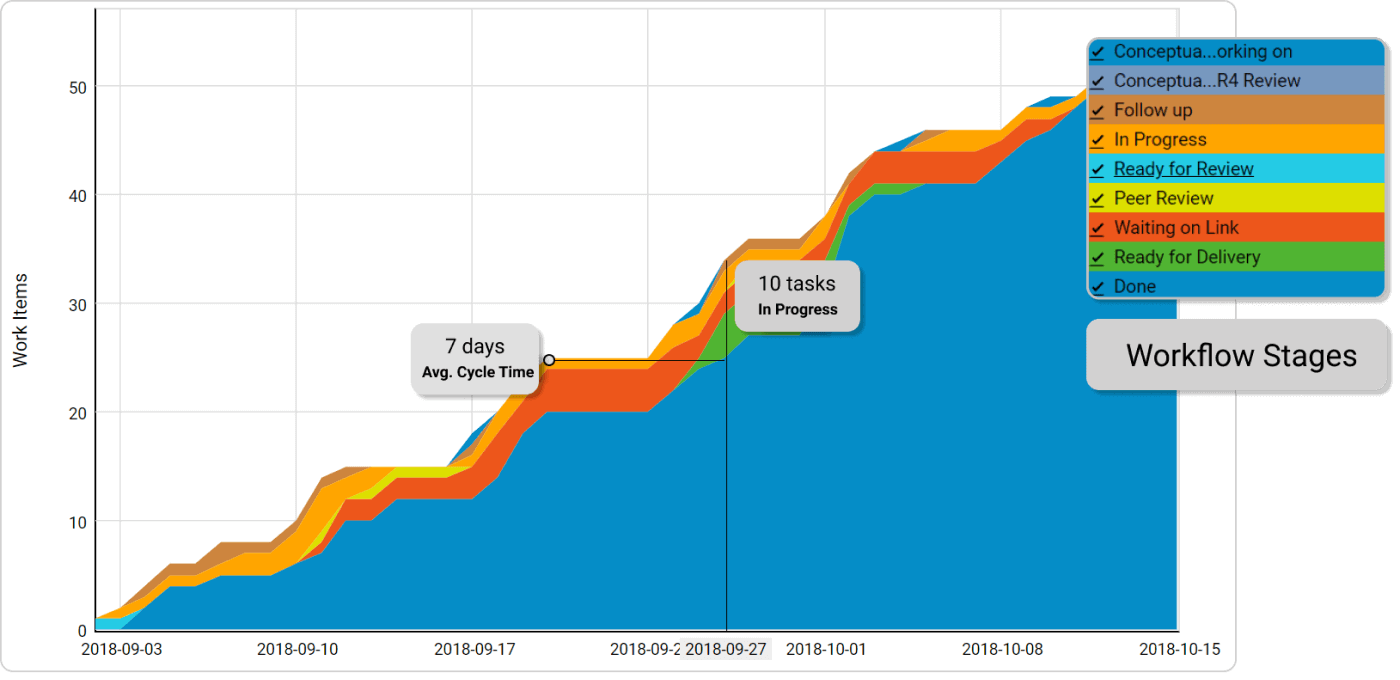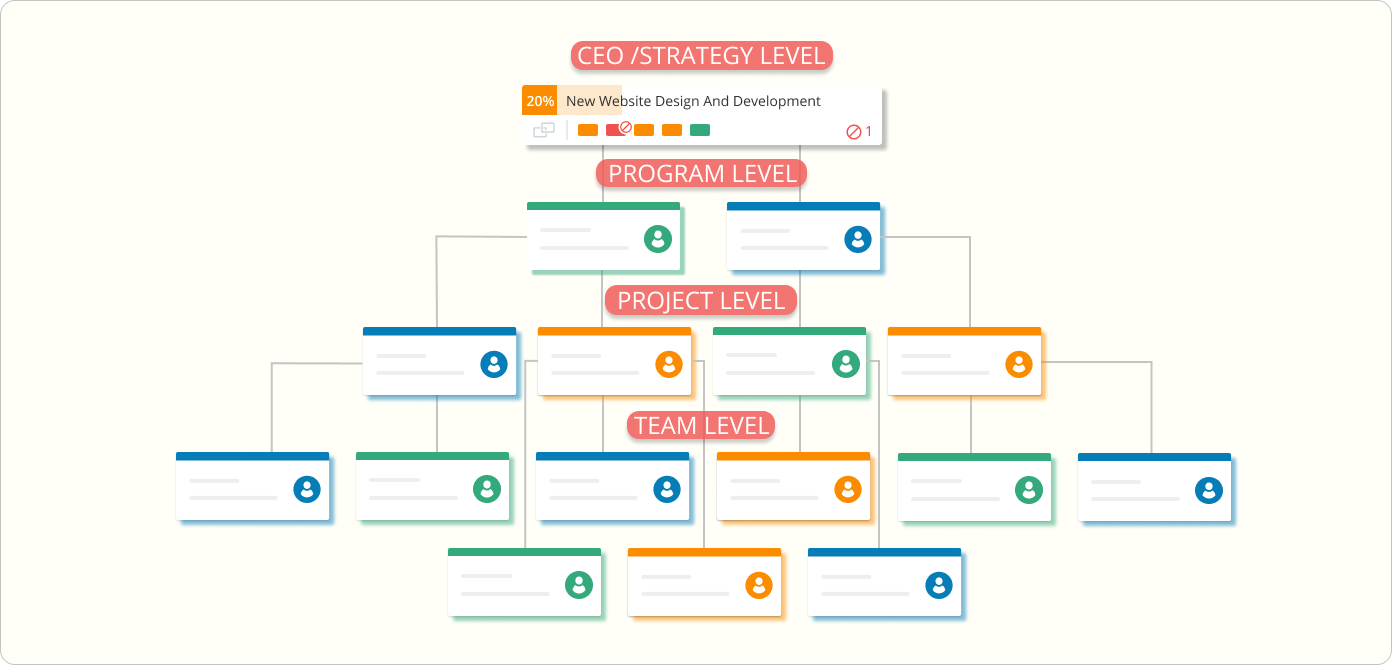Lean is all about delivering more value to the customer. To keep your clients happy, you need to establish a stable pace of delivering that value.
A common mistake that novice lean managers make is focusing strictly on getting rid of the Muda (aka the 7 wastes of Lean).
However, they have trouble understanding that failing to maintain a steady work rhythm is causing many other process wastes.
Unevenness is a major waste on its own in Lean. Known as Mura, it can disrupt a company’s workflow even on a global level if left unattended.
What Is Mura?
Mura is the waste of unevenness or inconsistency. Depending on your context, it can have more than one manifestation.
Mura is the conjunction of overburdening some resources while others wait or alternating over time between overburdening and underutilizing the same resources.
A typical prerequisite for unevenness is the inability to smooth out your process and create a balanced takt. As a result, your team tries to process as fast as possible, one large batch after another, with little thought of how your process will handle the burden.
Consequently, your process becomes less predictable, and you struggle to deliver value at a steady pace.
The Hockey Stick Effect
A clear example of unevenness in the work process is the Hockey Stick Effect.

It is a common sight within teams of any kind (e.g., marketing, development, QA, etc.) trying to hit some sort of a goal.
For example, a software development team practicing Scrum plans to release 10 new features within their next sprint, which is, let’s say 4 weeks long. They fill the backlog and start processing task after task.
Knowing that they’ve got plenty of time ahead, at first, they start working casually, picking up the pace as days roll by. By the beginning of the last week, the team realizes that they are falling behind schedule.
As a result, in the next few days, each member puts in an extra effort and at the cost of hours overtime and a lot of stress, they manage to finish the sprint successfully (in the best case scenario).
Due to the fatigue they’ve accumulated during the fourth week, they start slowly again at the beginning of the next sprint, and the cycle repeats.
The hockey stick effect can cause Mura in every context with no regulated limits to the amount of work that can be in progress simultaneously.
Identifying Mura
There are two major ways to identify unevenness in your process by applying Lean:
- Visualizing your workflow on a Kanban board.
- Measuring your process stability with a cumulative flow diagram.
Shining a Light on the Workflow with Kanban
Visualizing your workflow is a logical first step for spotting unevenness in your process. The main tool in Lean for that purpose is the Kanban method.
It allows you to map your workflow on a board divided by columns representing each step in your process. The more detailed you build it, the more comprehensive understanding you’ll have of the amount of Mura you’ve got in your process.
As every task your team works on is hosted on a Kanban card, you can clearly see how much work is in progress and where it gets stuck. As a result, you’ll be able to identify problematic areas and take action to deal with the unevenness.
The most powerful weapon in the Kanban arsenal for dealing with Mura is the ability to put limits on the amount of work in progress both globally and for any particular stage of your workflow. This way, you can ensure a steady flow of assignments and prevent unevenness.
However, placing the proper WIP limits is a tricky task, and just looking at your Kanban board may not give you the answer.
Cumulative Flow Diagram for Optimal Process Stability
The best way to gain a comprehensive understanding of the stability of your process is to draw a cumulative flow diagram.
 Cumulative flow diagram
Cumulative flow diagram
Each band on the diagram is a representation of a stage in your workflow. As the bands progress over time, you need to monitor their width. If all bands on your cumulative flow diagram (except for the bottom one) are progressing in parallel, then your progress is stable, and you don’t have notable problems with Mura.
However, if the distance between the stages varies, then you’ve got work to do. Wider bands represent stages where work arrives faster than your team can process it, and therefore these steps of your process become bottlenecks.
With that information at hand, you can come to an actionable conclusion where you need to place additional WIP limits to keep your process running all the time or increase capacity to alleviate a bottleneck.
Dealing with Mura on a team level is the easier part. However, when your whole organization has a problem with unevenness, things get more complicated.
Portfolio Kanban for Dealing with Mura on the Company Level
For many leaders, dealing with unevenness on a team level is enough to get rid of Mura.
However, establishing stable takts in your departments is not a guarantee that your company process will become steadier. Although the teams will work more efficiently, they may easily become bottlenecks to one another.
For example, let’s say that your development team has X capacity and a steady workflow. Your QA team has Y capacity that is < X and has no problem with Mura. The developers will push more work than the quality officers can process, and although both teams are efficient on their own, your overall development process will remain uneven.
The solution? Setting WIP limits on the Portfolio level.
This can be a serious challenge if you can’t connect the different levels of your company process together into a single picture. The answer lies in the Portfolio Kanban method, a lesser-known approach to Kanban developed especially for global implementation.
 Portfolio Kanban Work Breakdown
Portfolio Kanban Work Breakdown
With its help, you can create multiple layers of Kanban boards connected to each other. As a result, when breaking down company-wide (or anything larger than team tasks, to be precise) initiatives, you can have a clear look at the evenness of your process.
We offer the most flexible software platform
for outcome-driven enterprise agility.
In Summary
Mura is a major waste in Lean management that can seriously harm your company if left unattended. By maintaining a stable workflow you can achieve:
- Steadier pace of delivering finished goods to your customers.
- Better use of your employee’s capacity.
- More effective collaboration between different teams.






 Cumulative flow diagram
Cumulative flow diagram Portfolio Kanban Work Breakdown
Portfolio Kanban Work Breakdown

